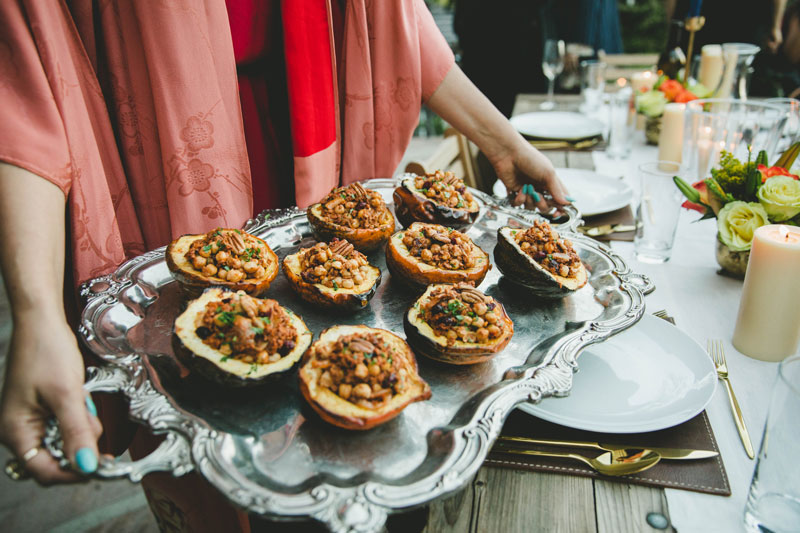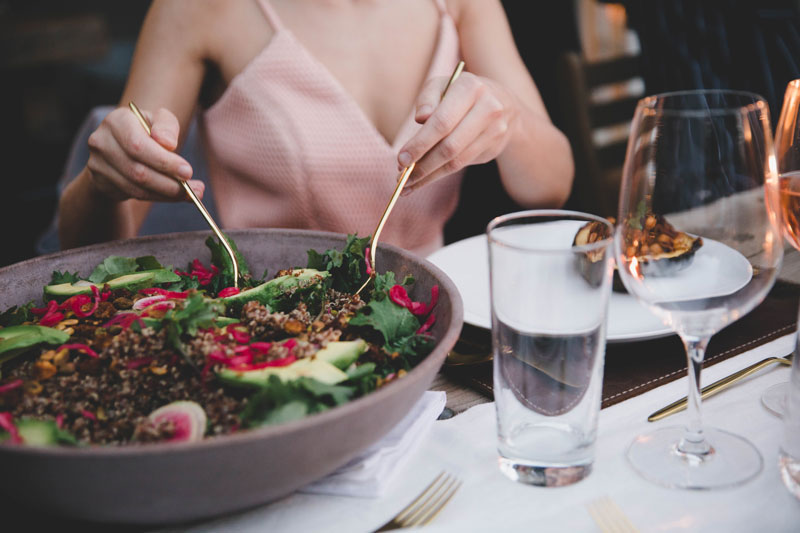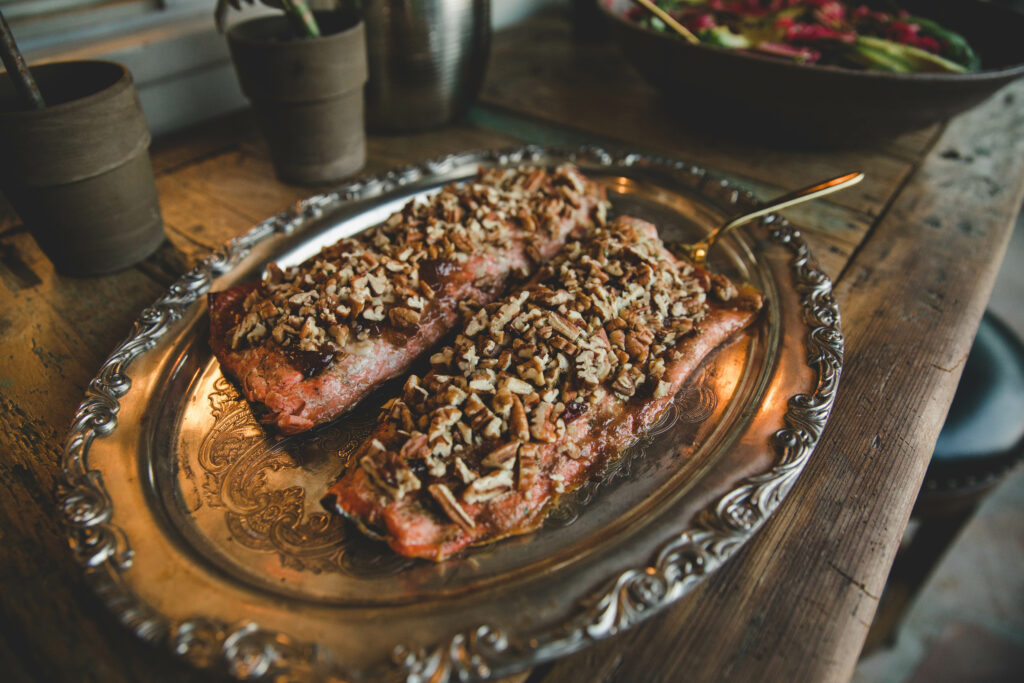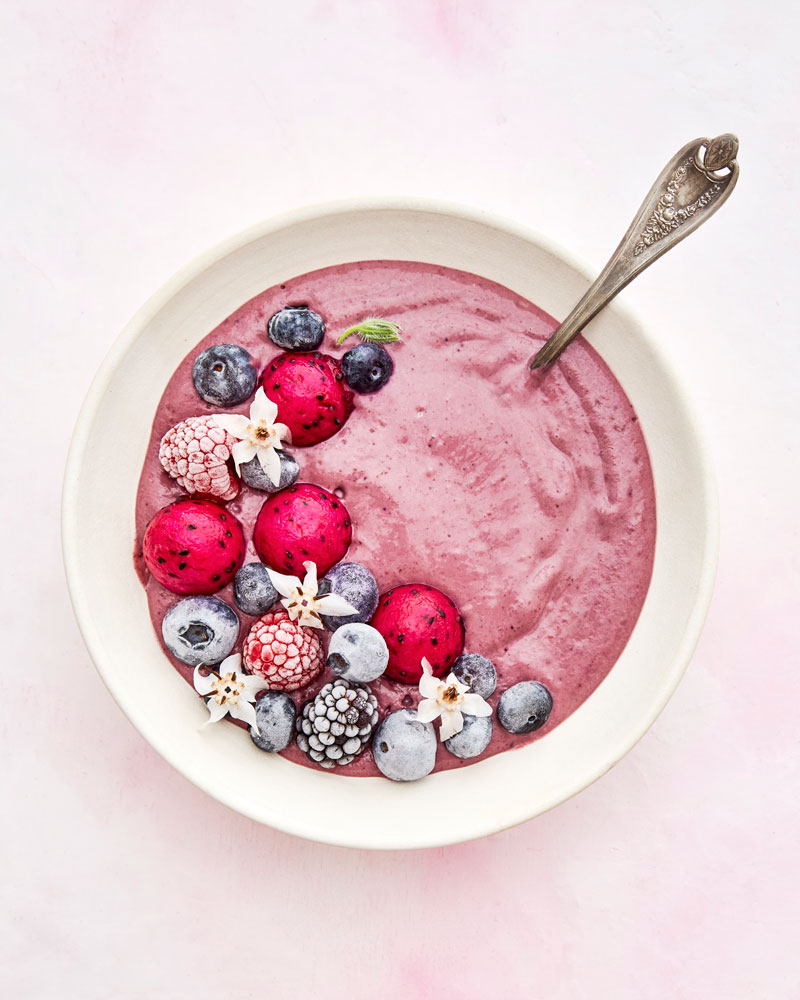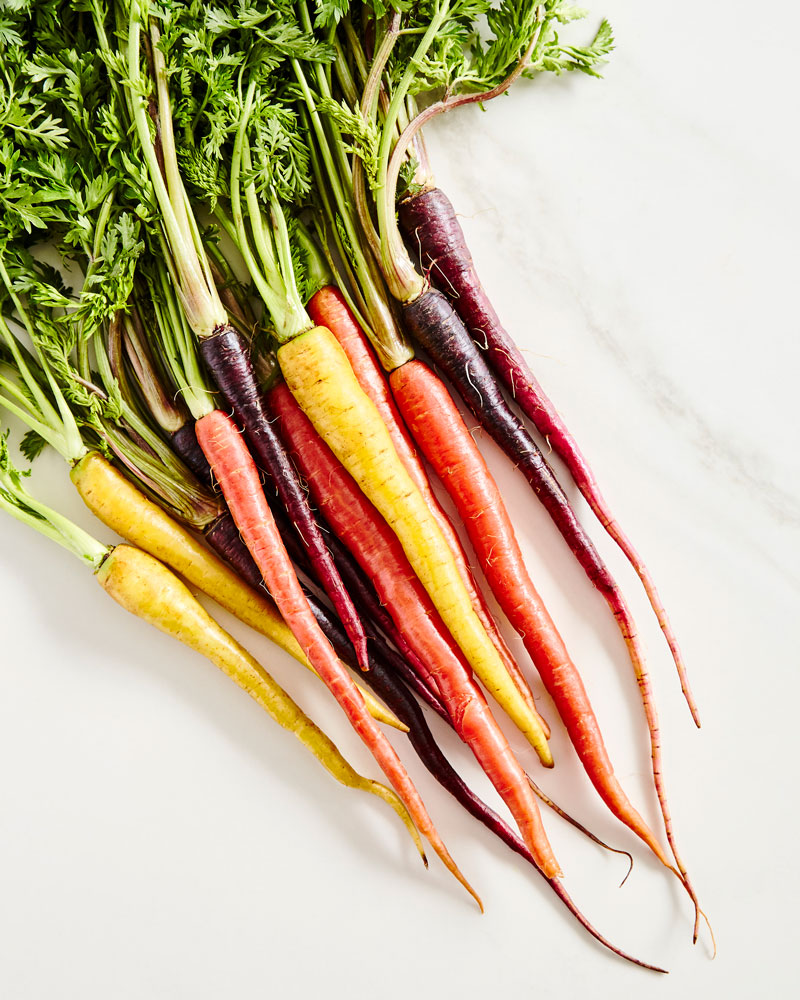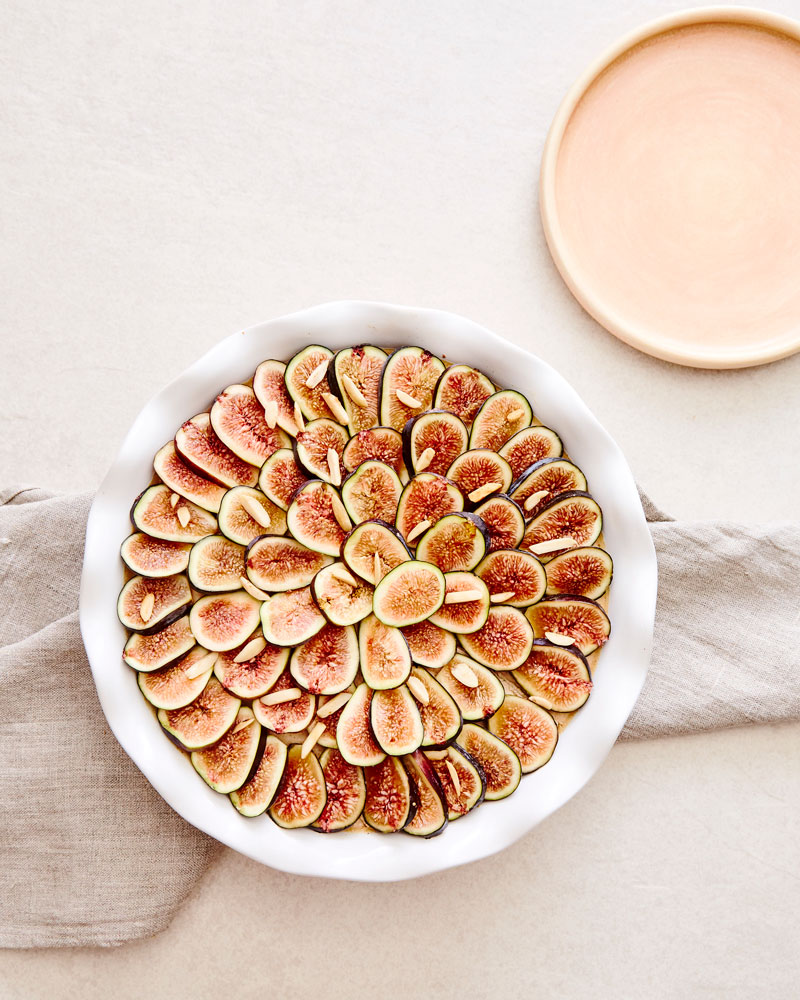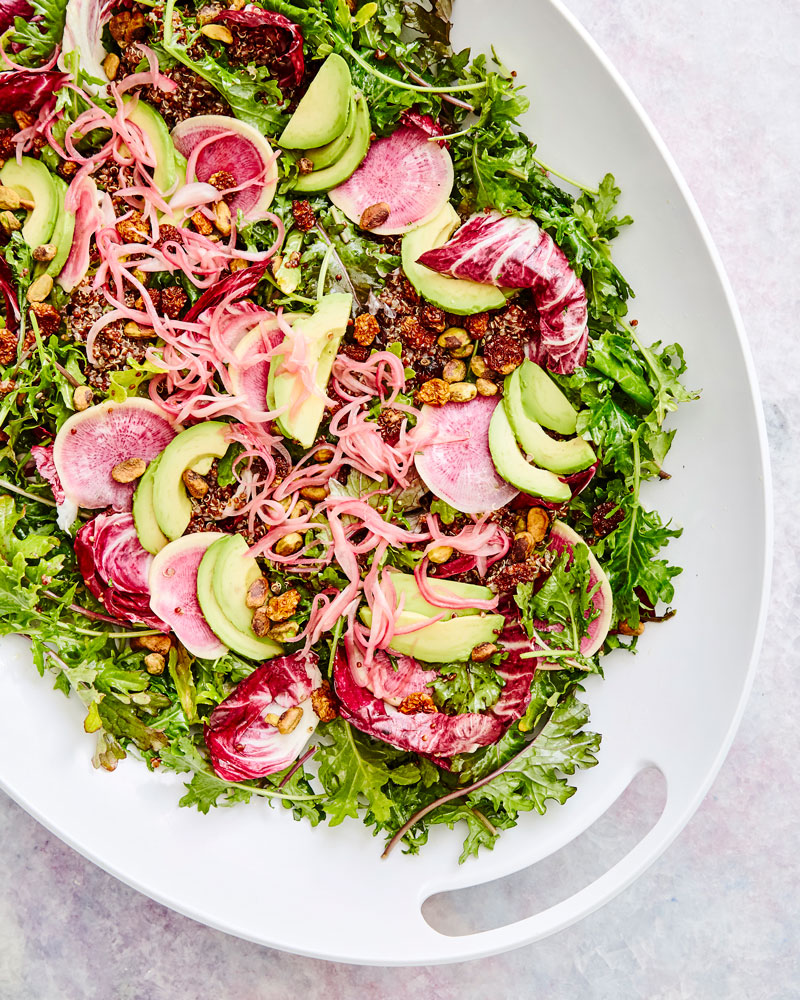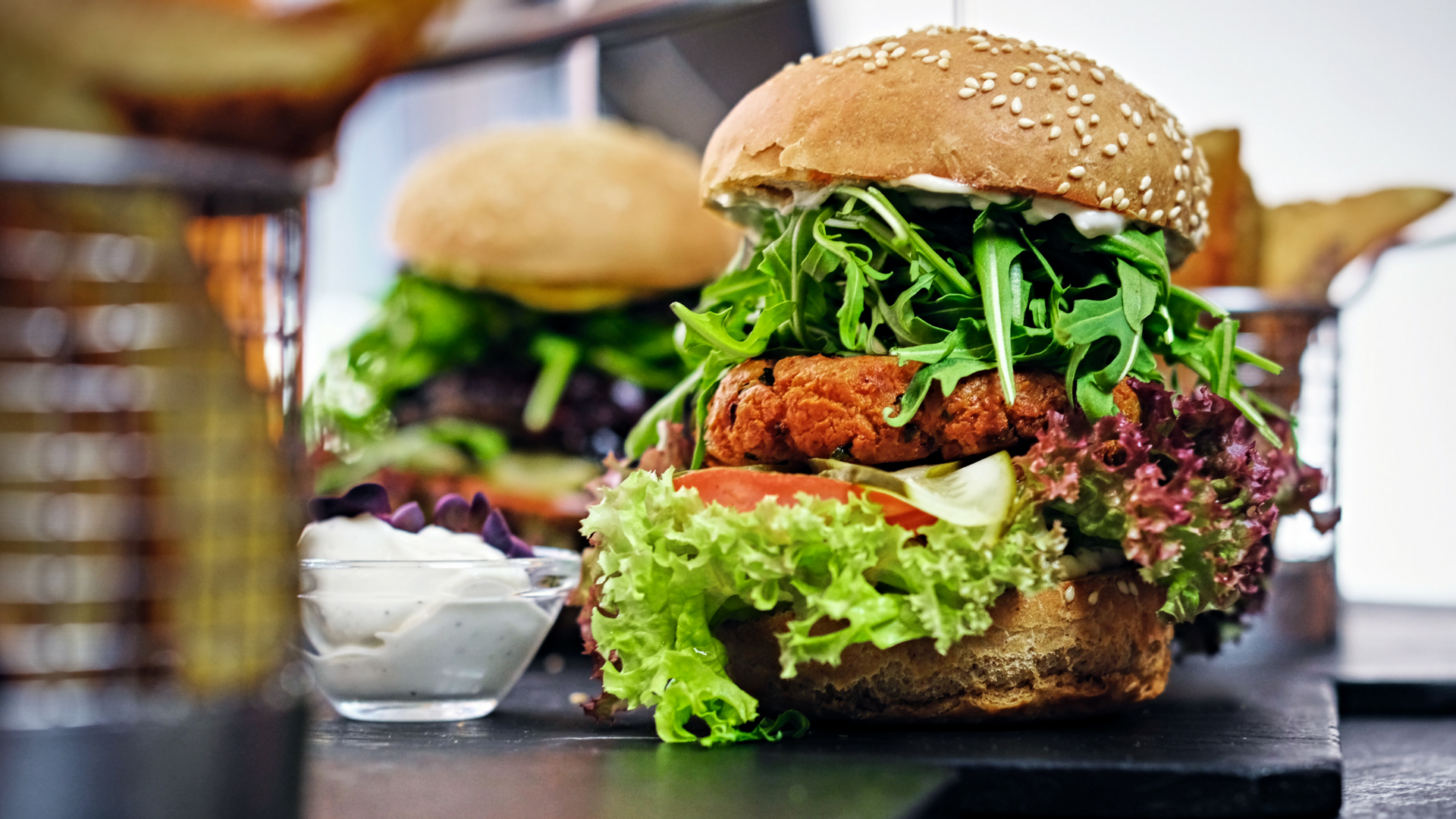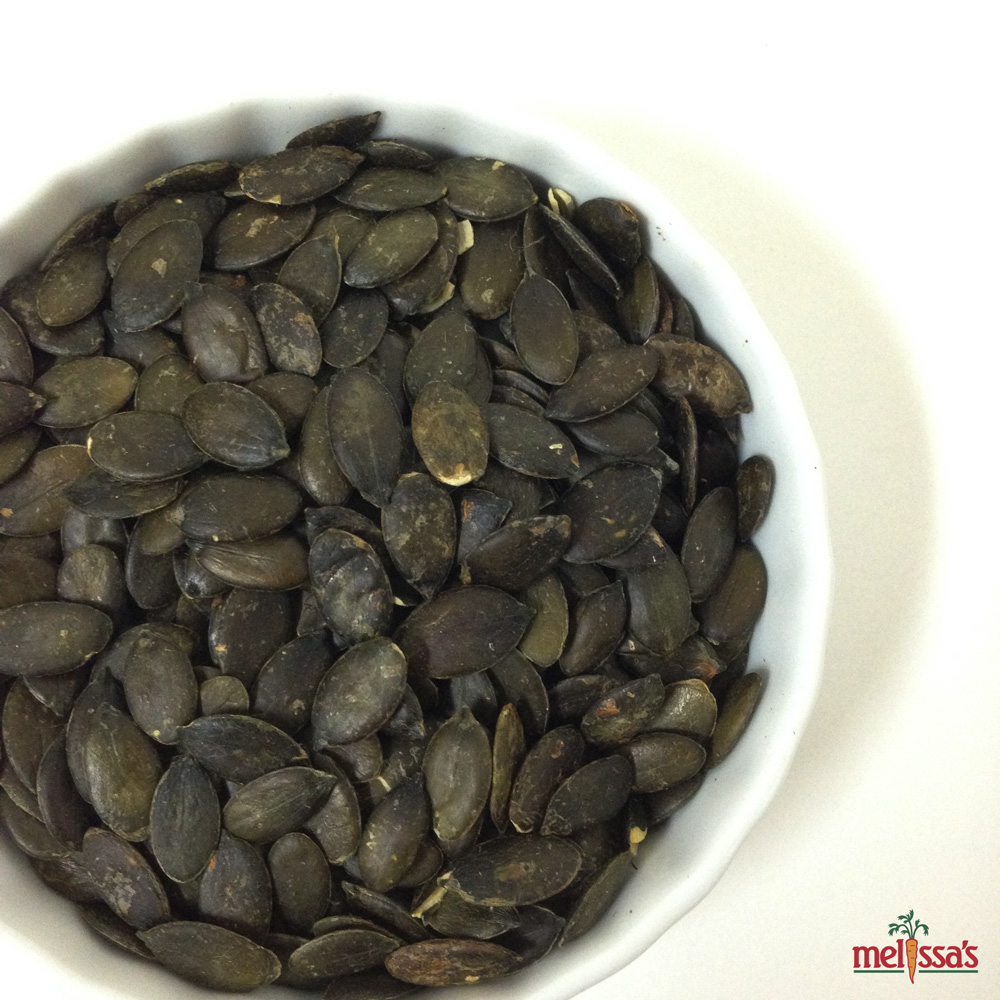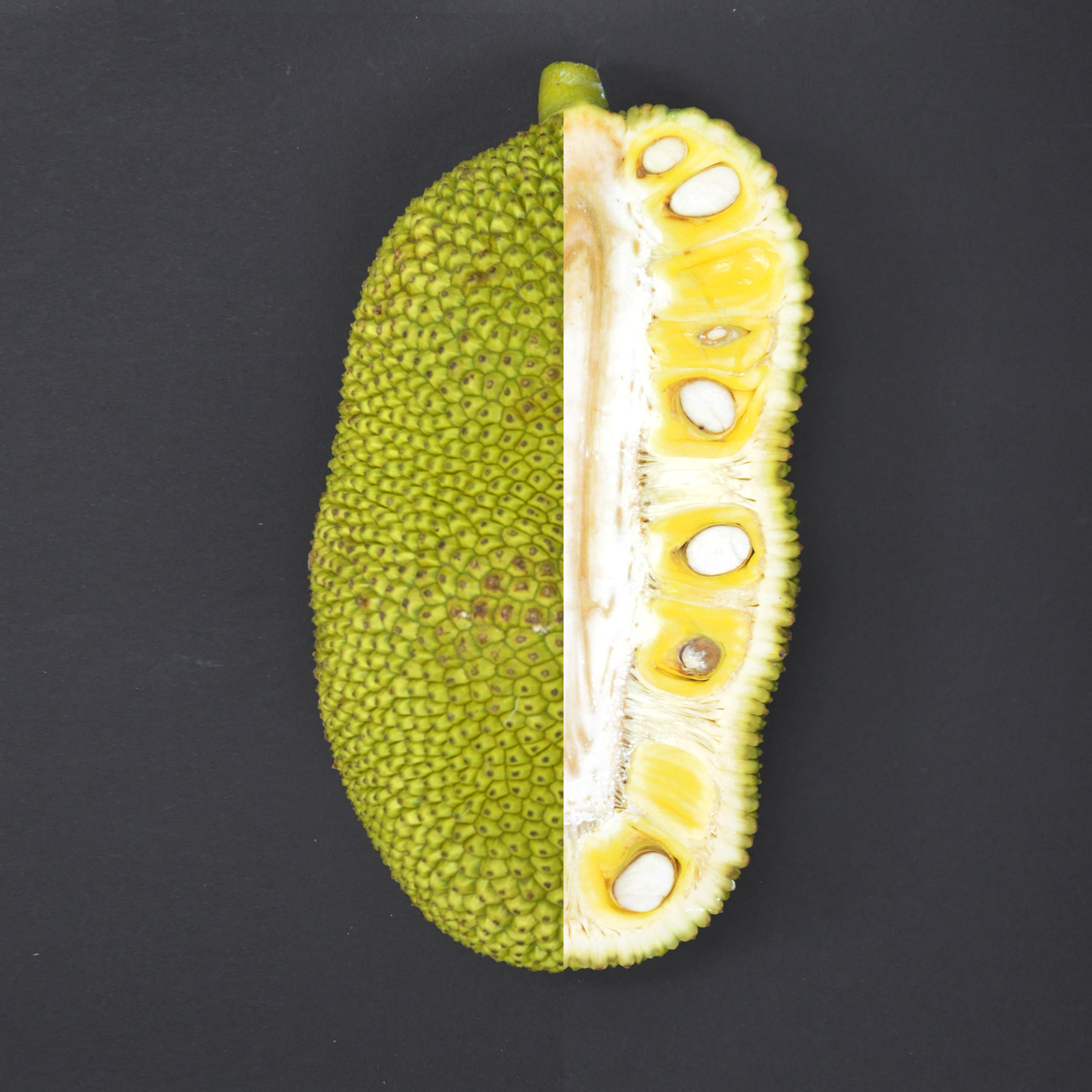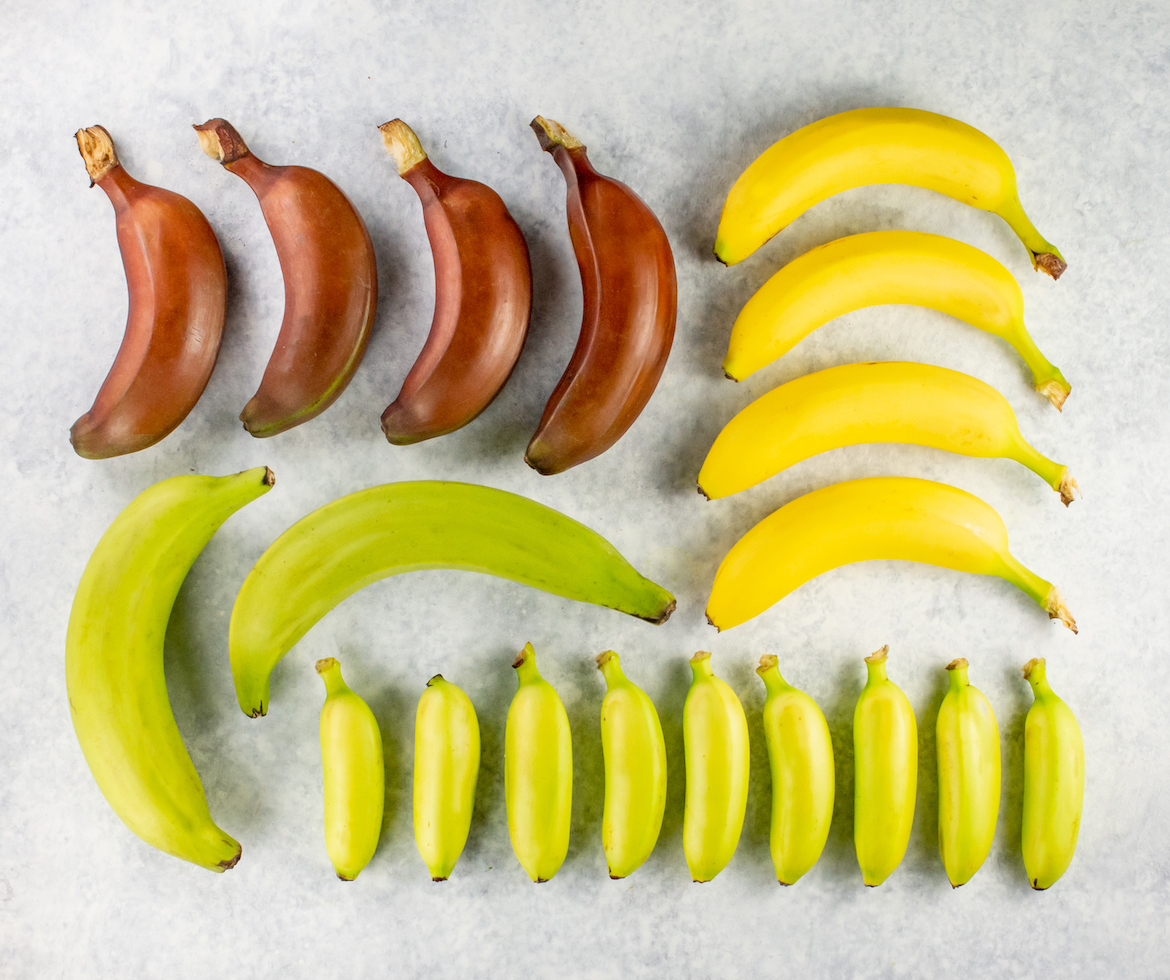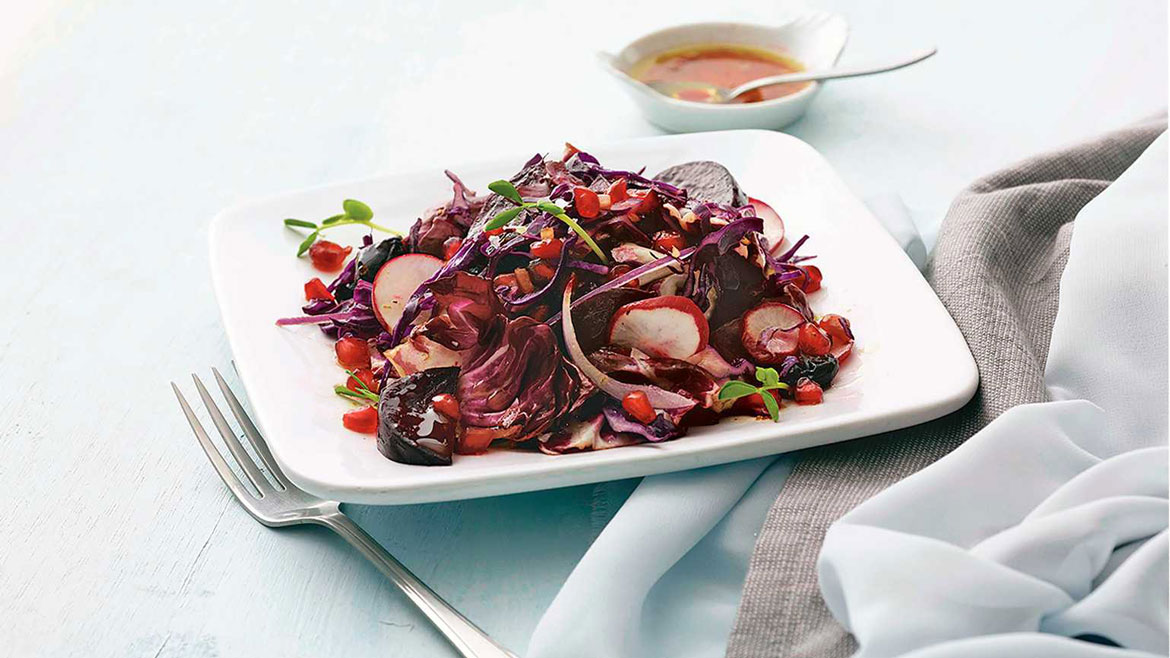Photography credit: Camraface
Actress Abbie Cornish and chef Jacqueline King Schiller paired up in Melissa’s kitchen to demo delicious dishes from their new cookbook, “Pescan: A Feel Good Cookbook.” These recipes are plant-based, both dairy and gluten-free and full of flavor. The dynamic duo are best friends who’ve bonded over their love of food and wellness, and this cookbook is an extension of that journey.
Pescan offers 100 delicious recipes to fuel a pescan lifestyle, along with tips on how to stock your kitchen. If you’re just getting started, they have you covered. Jacq even gives tips on how to cook like a pro. Throughout the book you’ll find little call-out cheat sheets that help with things like how to smash garlic to a roasted vegetables cheat sheet. We especially loved the educational call-outs, like learning more about the nutritional benefits of lemon (look for the feel good ingredients in the book).
After the event, we caught up with Chef Jacq and asked her to shed some insight on their awesome cookbook.
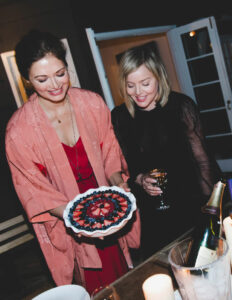
Q: Wow – your cookbook is absolutely stunning. Just looking at it makes me feel good.
Jacqueline King Schiller: Thank you! It was, as they say, a labor of love. We chose each of the plates, many of which were handmade by a local potter. We cooked and styled all of the food ourselves. Abbie even painted some of the background surfaces that we photographed on. We wanted the photos to look beautiful and inspiring but totally achievable. There were no gimmicks used, we ate everything you see pictured in the book.
Q: Your collaborative ethos is so inspiring. Here at Melissa’s we couldn’t agree more that food is the future of medicine, and we double down on the notion that preparing food that nourishes our body is rewarding form of self-love. In a nut shell, how does one practice this ideology?
JKS: In a nutshell, it’s about making a conscious decision to make food choices that support our well-being. We all want to feel strong, energized, and healthy. Perhaps nothing else has a greater impact on how we feel than what we eat. On a practical level, choosing more foods that grow out of the ground or on a tree rather than those made in a factory is a great start.
Q: What are some guidelines to live by while cooking in the kitchen?
- Make the most of your time. We’re a big proponent of batch cooking. That means making a plan and cooking whole foods that you can use to make quick healthy meals all week. The first chapter in our book is all about this.
- Have fun, experiment with different flavors and textures. Cooking can be an exciting creative outlet and a wonderful way to take care of yourself and others.
- Make sure your kitchen is well organized so cooking is easy rather than frustrating. There’s nothing worse than searching for a spatula when something is about to burn on the stove.
- When you are working with a recipe, get in the habit of prepping and measuring all of your ingredients before you start cooking. This will make cooking much more relaxing since you’ll have everything you need at your fingertips.
- Invite friends for family over to cook or host a potluck when you can. Home-cooked food is best enjoyed with those you love. This is increasingly important in this era of home-delivery and solitary eating. Studies have actually shown that the more people eat with others, the more likely they are to feel satisfied and happy in their lives.
Photography credit: Ren Fuller
Q: For our readers that aren’t in the know, what does it mean to practice a pescan lifestyle, beyond what’s on the plate?
JKS: We use the word “lifestyle” because we don’t want people to think of this as a short-term weight-loss plan but rather as a sustainable and beneficial life-long way of eating.
Q: What are some go-to produce picks that you two recommend should be in our shopping cart weekly?
JKS: Having a well-stocked kitchen is the key to creating tasty and nutritious meals which is why we have a shopping guide in our book. Our weekly produce picks include vegetables that can be used raw in salads and wraps such as lettuce, tomatoes, carrots, baby dark leafy greens, radishes, cucumbers, and celery. Other essentials include seasonal vegetables for roasting, sautéing, or steaming as well as fresh fruit for breakfast, dessert, and healthy snacking. We also recommend keeping a couple of large sweet potatoes and russet potatoes ready to bake for an easy meal. Avocado adds richness to sandwiches and wraps and makes a luscious topping for soups, salads, and, of course, toast.
Q: What are fundamental flavor builders and how should we use them when cooking?
JKS: Onions, shallots, fresh ginger, and garlic are nutritional powerhouses that also make food more delicious and exciting. We use at least one of these ingredients in almost all of our savory dishes, from soup to risotto to spaghetti and clams. Nothing adds more character to a basic recipe than spices or fresh herbs. In addition to adding a ton of flavor, they also each have unique medicinal qualities. The juice from fresh citrus like lemon, lime, and orange can add a bright finish to any number of dishes.
Q: What produce do you recommend for the freezer? And are there any tips or tricks on how to properly store?
JKS: Frozen fruit makes a great base ingredient for smoothies. Freezing your fresh fruit when it’s very ripe is a great way to prevent food waste. Simply wash and cut the fruit prior to freezing in zip-top plastic bags. Be sure to peel bananas, hull berries, and discard pits and cores before freezing. Very ripe spotty bananas make the best frozen bananas for smoothies. We also love frozen peas and lima beans. They taste like springtime and are an easy way to add protein and color to rice dishes, soups, and pasta.
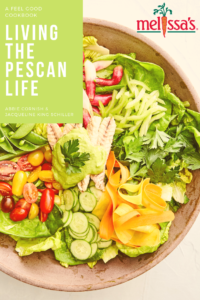
Q: Fall is a great season for roasting vegetables. What’s your go-to roasted vegetable recipe from the book? Abbie Cornish
JKS: Our Whole Roasted Maple-Ginger Carrots are a definitely a fall favorite. We were also sure to include a basic roasted vegetable recipe and cooking chart since almost every vegetable tastes delicious even when roasted simply with a bit of oil, salt, and pepper.
Q: Favorite soup to enjoy during cooler months? Abbie Cornish
JKS: The Roasted Acorn Squash Soup with Rosemary-Spice Candied Pecans is so warming and satisfying and our Creamy Truffle Mushroom Soup has become a holiday favorite. We also love to make a “clean out the fridge” soup with a little onion, cabbage, vegetable broth, and whatever extra vegetables we have on hand.
Q: With the upcoming Thanksgiving holiday, we have to ask, what would a pescan holiday tablescape look like? Abbie Cornish
JKS: One of our goals for the book was to include plenty of special occasion recipes for any holiday and a list of suggested menus. For Thanksgiving we have a gorgeous Stuffed Maple-Glazed Acorn Squash filled with soyrizo, chickpeas, cranberries, and pecans that makes a wonderful plant-based main dish. Our baked Salmon with Mango Chutney and Crushed Pecans is a perfect sweetly spiced pescatarian main. We usually serve all of the traditional sides but leave out the dairy or use vegan substitutions for things like butter. To finish we like to serve a beautiful Almond Butter Mousse Pie topped with fresh figs or persimmon. It’s a meal that tastes rich and indulgent but still leaves you feeling good at end.
Photography by @camraface and Ren Fuller.

